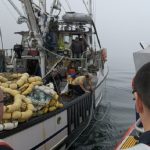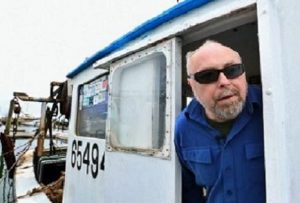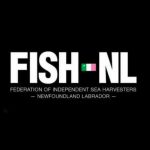Tag Archives: wild-caught shrimp
Southern Shrimp Alliance Welcomes NOAA Fisheries’ Confirmation that U.S. Wild-Caught Shrimp Is the Sustainable Choice
 Last week, NOAA Fisheries published an on-line resource with facts regarding wild-caught American shrimp, explaining what makes it a sustainable seafood choice. Shrimp is, far and away, the most popular seafood in America. As NOAA Fisheries explains, “now about one-quarter of the seafood Americans eat is shrimp.” Yet, despite Americans’ love of shrimp, the U.S. shrimp industry is struggling. NOAA Fisheries notes that despite the fact that landings volumes were roughly the same in 2023 as they were in 2022, preliminary data from the Gulf of Mexico show that the industry sold $329 million of wild-caught shrimp in 2022 and that revenue dropped to $204 million in 2023 – a 38 percent drop.” more, >>CLICK TO READ<< 16:29
Last week, NOAA Fisheries published an on-line resource with facts regarding wild-caught American shrimp, explaining what makes it a sustainable seafood choice. Shrimp is, far and away, the most popular seafood in America. As NOAA Fisheries explains, “now about one-quarter of the seafood Americans eat is shrimp.” Yet, despite Americans’ love of shrimp, the U.S. shrimp industry is struggling. NOAA Fisheries notes that despite the fact that landings volumes were roughly the same in 2023 as they were in 2022, preliminary data from the Gulf of Mexico show that the industry sold $329 million of wild-caught shrimp in 2022 and that revenue dropped to $204 million in 2023 – a 38 percent drop.” more, >>CLICK TO READ<< 16:29
South Carolina shrimpers are in troubled waters. Here’s how the industry is seeking relief
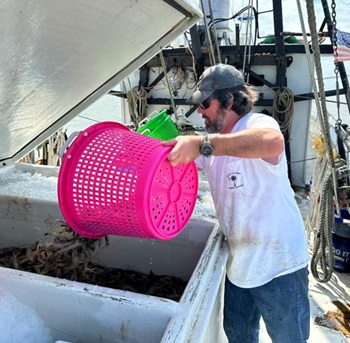 South Carolina shrimpers are in a fight for their industry’s future. Facing pressures from foreign countries shipping in cheap, frozen catches in abundance, domestic shrimpers have been unable to compete. Bryan Jones is a first-generation shrimper in McClellanville. Before his life became centered around nets and saltwater and fresh catch, he was a vice president of a wealth management firm in Florida. The work is exhausting and the days on the deck of his trawler, the Pamela Sue, are long, Jones said. There are risks involved with shrimping — financial, environmental, physical — but he saw an opportunity to create a livelihood for his family and couldn’t resist. He joins at a time when fishermen are struggling, and more are deciding to leave the trade altogether. “The average age of a shrimp boat captain, I believe, is 65,” Jones said. “What we need is an injection of youth in the industry to sustain it.” Photos, more, >>CLICK TO READ<< 11:21
South Carolina shrimpers are in a fight for their industry’s future. Facing pressures from foreign countries shipping in cheap, frozen catches in abundance, domestic shrimpers have been unable to compete. Bryan Jones is a first-generation shrimper in McClellanville. Before his life became centered around nets and saltwater and fresh catch, he was a vice president of a wealth management firm in Florida. The work is exhausting and the days on the deck of his trawler, the Pamela Sue, are long, Jones said. There are risks involved with shrimping — financial, environmental, physical — but he saw an opportunity to create a livelihood for his family and couldn’t resist. He joins at a time when fishermen are struggling, and more are deciding to leave the trade altogether. “The average age of a shrimp boat captain, I believe, is 65,” Jones said. “What we need is an injection of youth in the industry to sustain it.” Photos, more, >>CLICK TO READ<< 11:21
Is U.S. Wild-Caught Shrimp Sustainable? The Short Answer Is Yes
 U.S.-harvested shrimp is nutritious, delicious… and sustainable! The shrimp fishery has also historically been a culturally important economic engine. It provides a livelihood for thousands of U.S. commercial fishermen. U.S. shrimp are a sustainable seafood option, and the United States sets a global precedent for shrimp trawl bycatch reduction. But our nation’s shrimp industry is struggling to stay afloat and there’s confusion about its sustainability. Here are the facts about U.S. wild-caught shrimp. Most U.S. shrimp are caught in the Southeast from Texas to North Carolina. Three species—white shrimp, pink shrimp, and brown shrimp—make up the vast majority of the shrimp caught. more, >>CLICK TO READ<< 10:22
U.S.-harvested shrimp is nutritious, delicious… and sustainable! The shrimp fishery has also historically been a culturally important economic engine. It provides a livelihood for thousands of U.S. commercial fishermen. U.S. shrimp are a sustainable seafood option, and the United States sets a global precedent for shrimp trawl bycatch reduction. But our nation’s shrimp industry is struggling to stay afloat and there’s confusion about its sustainability. Here are the facts about U.S. wild-caught shrimp. Most U.S. shrimp are caught in the Southeast from Texas to North Carolina. Three species—white shrimp, pink shrimp, and brown shrimp—make up the vast majority of the shrimp caught. more, >>CLICK TO READ<< 10:22
A Little Faith in Shrimp
 Faith Family Shrimp, located in Chauvin, Louisiana, offers a unique glimpse into the world of shrimp fishing and processing. Owned by Chad and Angela Portier, this family-operated business at 8167 Redfish Street showcases the journey of Louisiana wild-caught shrimp from their commercial fishing vessels to the consumer’s table. They emphasize the finest quality of shrimp, underscoring their commitment to the local seafood industry. For National Shrimp Day (May 10), visitors can engage in the various activities offered by Faith Family Shrimp, such as guided tours which explain the drying process of shrimp and other insights into the industry. Photos, more, >>CLICK TO READ<< 06:01
Faith Family Shrimp, located in Chauvin, Louisiana, offers a unique glimpse into the world of shrimp fishing and processing. Owned by Chad and Angela Portier, this family-operated business at 8167 Redfish Street showcases the journey of Louisiana wild-caught shrimp from their commercial fishing vessels to the consumer’s table. They emphasize the finest quality of shrimp, underscoring their commitment to the local seafood industry. For National Shrimp Day (May 10), visitors can engage in the various activities offered by Faith Family Shrimp, such as guided tours which explain the drying process of shrimp and other insights into the industry. Photos, more, >>CLICK TO READ<< 06:01

Once Sourced Out-of-State, Shrimp From New York Is Becoming a Status Ingredient
When wild shrimp is US-harvested, it’s pulled in-season from the waters off Louisiana, Texas, Florida, and the Carolinas. Increasingly, though, a select number of New York restaurants are embracing local shrimp, highlighting fisheries in and around Montauk. Long Island’s royal red shrimp is caught off Montauk at nearly 3,000 feet. “Their color is a gorgeous, gorgeous dark red; a color I’ve never seen in my life,” says lifelong fisherman, K.C. Boyle. Photos, more, >>CLICK TO READ<< 06:42
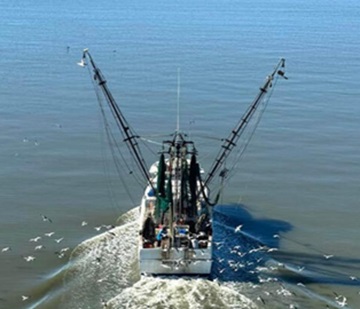
Wild-Caught Shrimp: South Carolina’s Long History
There’s something positively serene about watching shrimp boats trawling our coastal waters. Shrimping has been an important part of our culture in Beaufort and all of South Carolina since long before anyone can remember. In fact it’s been a labor of love for fishermen since before the Civil War and is still alive and kicking today with a thriving market served by dedicated commercial fishermen in the Palmetto State. Shrimp are America’s most valuable and most popular seafood, according to the NOAA Fisheries, and SCDNR tells us that South Carolina is home to three species of shrimp: brown shrimp, white shrimp, and pink shrimp. Brown and white shrimp are more common than pink shrimp, but all three taste the same. >>click to read<< 20:47
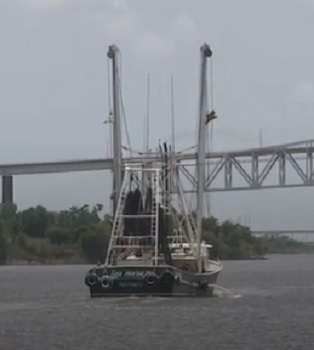
Higher shrimp prices causing problems for packers and retailers
The inflated price of shrimp in Southeast Texas has had a varying economic impact for both consumers and industry professionals. While restaurants were closed during the pandemic, consumers flocked to grocery stores and markets. Great news for packers, fishermen and seafood market owners, but not so good for consumers who saw prices increase. video, >click to watch< 10:45

The city of St. Augustine now has an official seafood: Wild-caught shrimp!
The move received unanimous support from commissioners, who adopted a resolution. “The historic San Sebastian River hosted an important chapter in U.S. maritime history,” the resolution says. “Northeast Florida is the birthplace and home to the U.S. commercial shrimping industry … innovators, including Mike ‘Sollecito’ Salvador, Salvatore Versaggi and Antonio Poli, moved to St. Augustine in the early 1920s to set up fish houses and shrimping fleets that supplied northern markets … the industry grew rapidly, and a boatbuilding enterprise began in St. Augustine that became a cultural and economic mainstay of the city for most of the 20th century. 22 photos, >click to read< 09:43
Jim Budi dismantles Sammy Fretwell’s Oceana talking points about the S.C. shrimp industry
 In the article “Careless fishing causes depletion of marine life” by Sammy Fretwell, reporting on an Oceana study, readers were misled by out-of-context statistics and by omissions. The report painted a bleak picture of wild-caught shrimp, ignoring the reality of a vastly improved conservation landscape. Read more here 09:27
In the article “Careless fishing causes depletion of marine life” by Sammy Fretwell, reporting on an Oceana study, readers were misled by out-of-context statistics and by omissions. The report painted a bleak picture of wild-caught shrimp, ignoring the reality of a vastly improved conservation landscape. Read more here 09:27







































